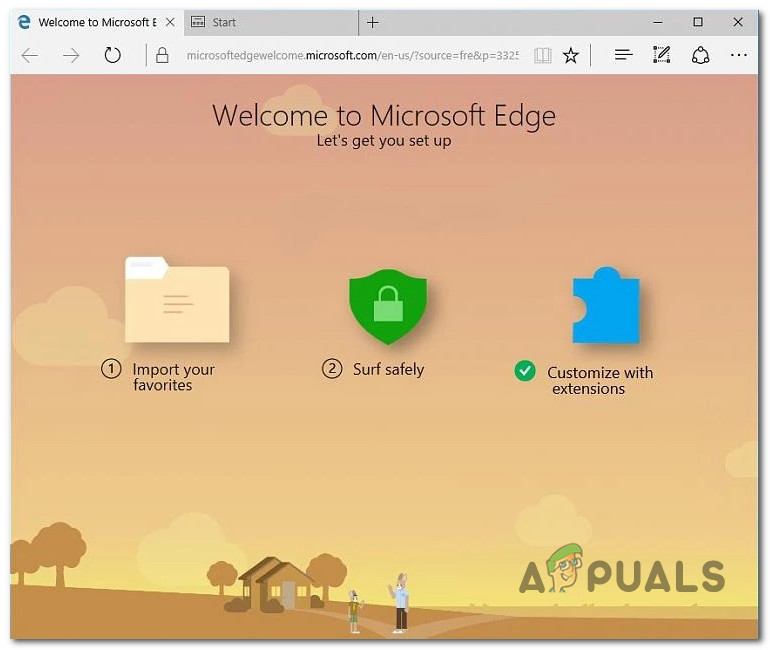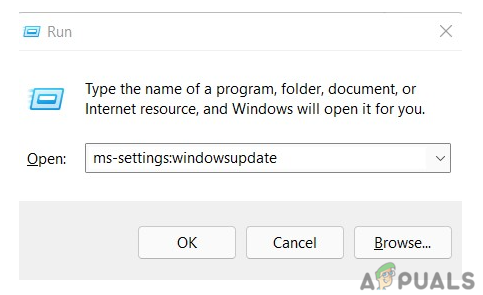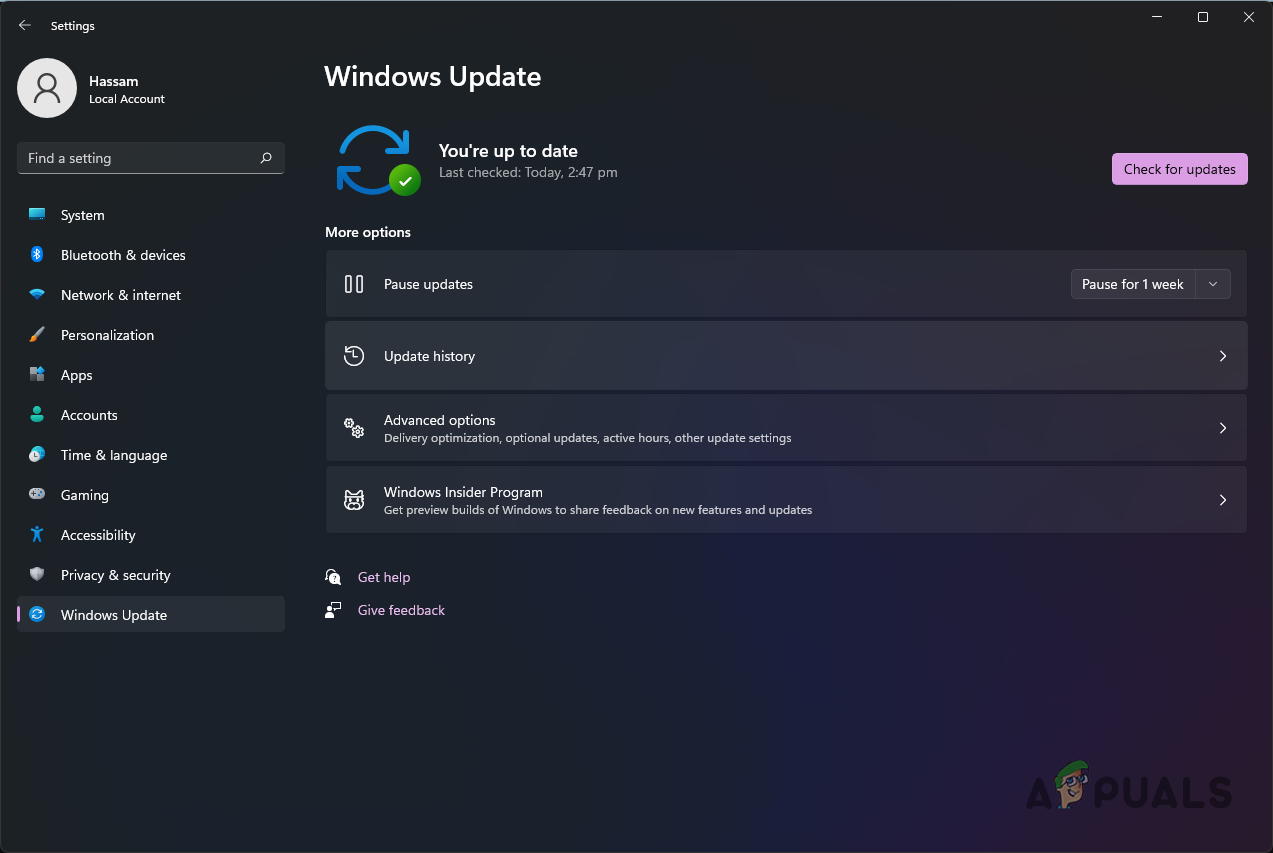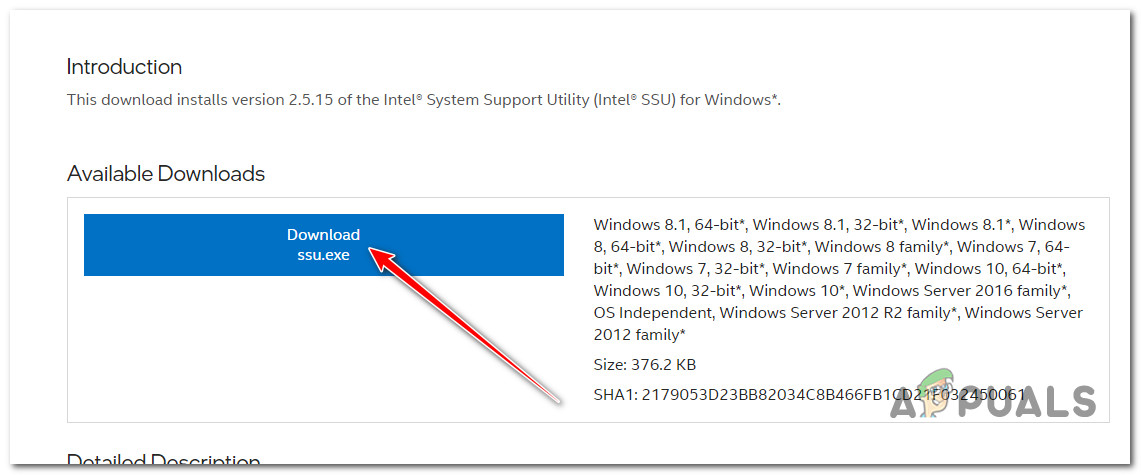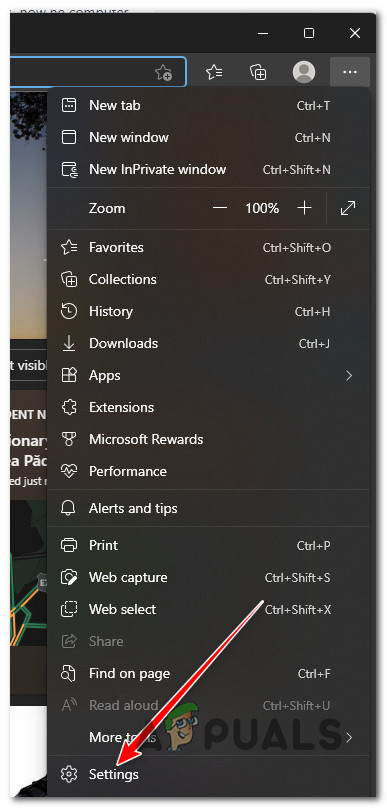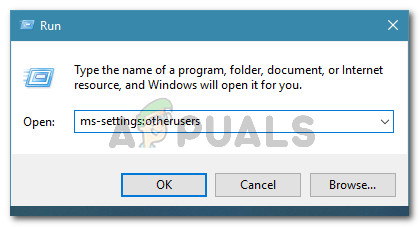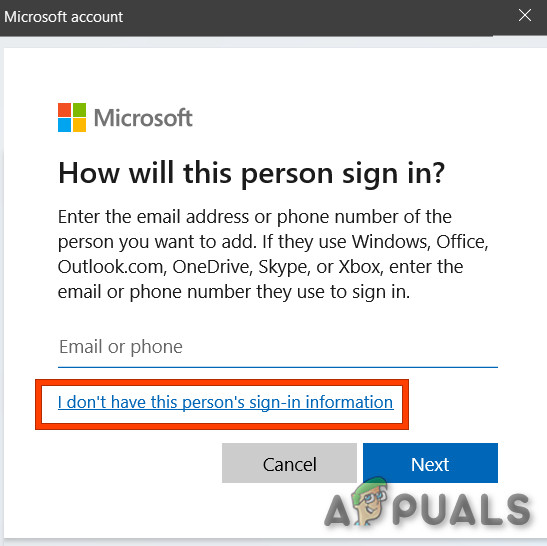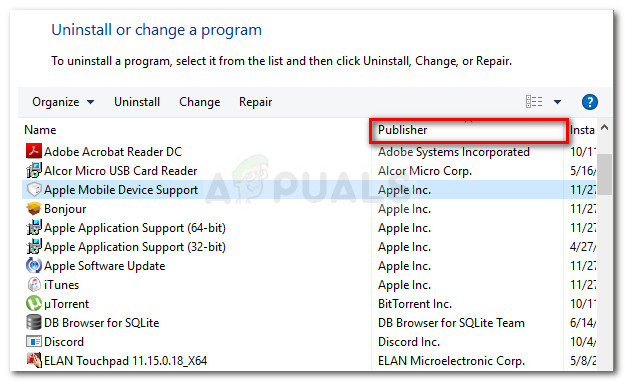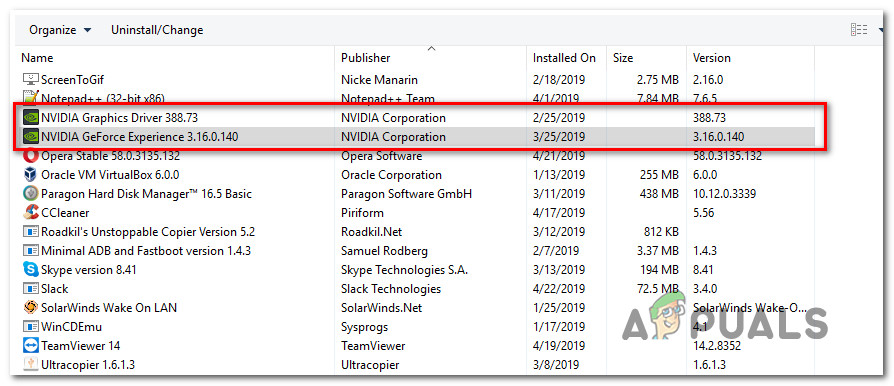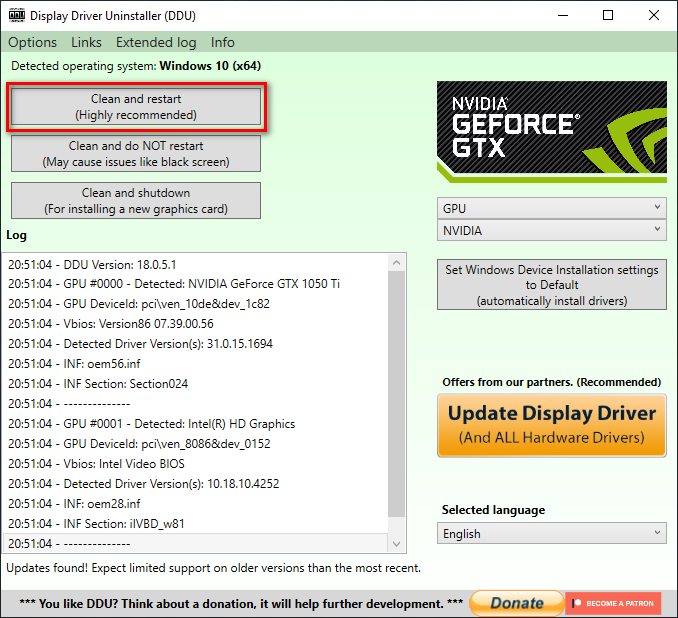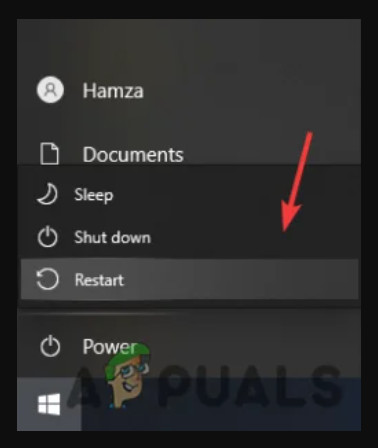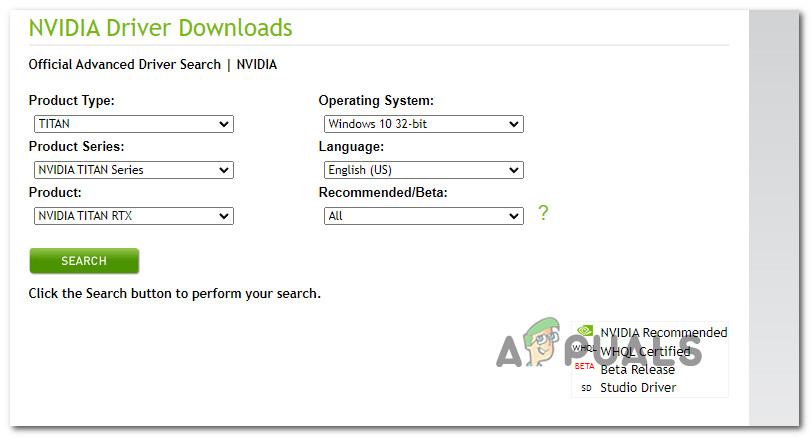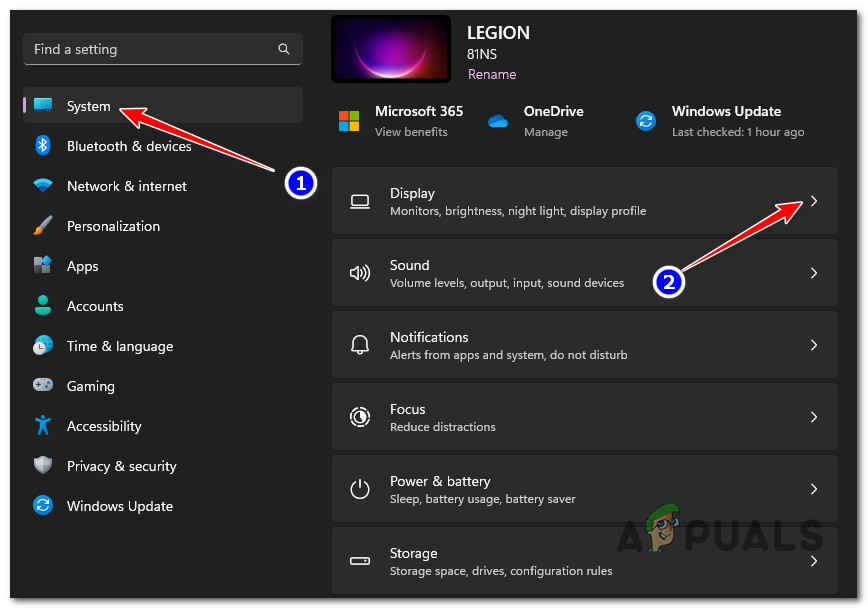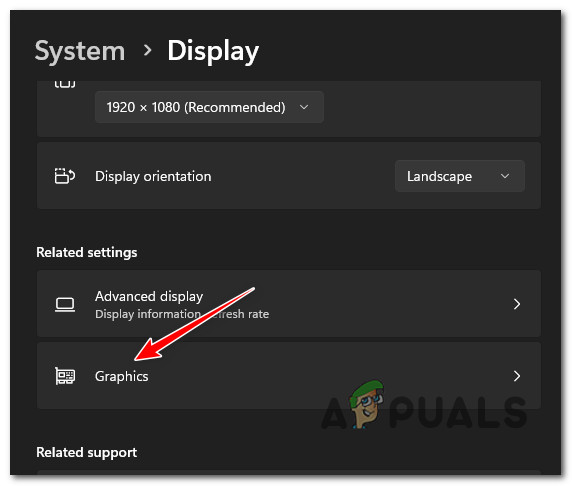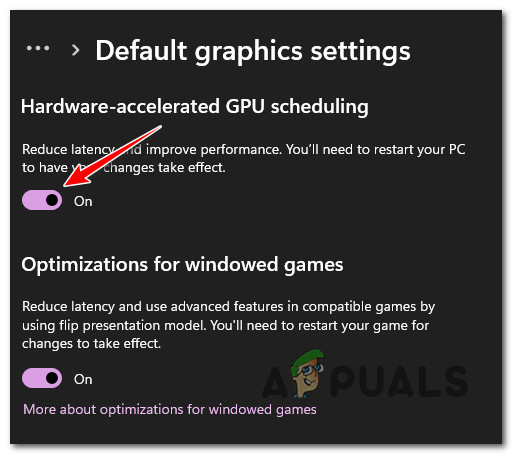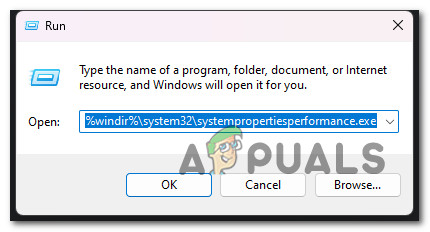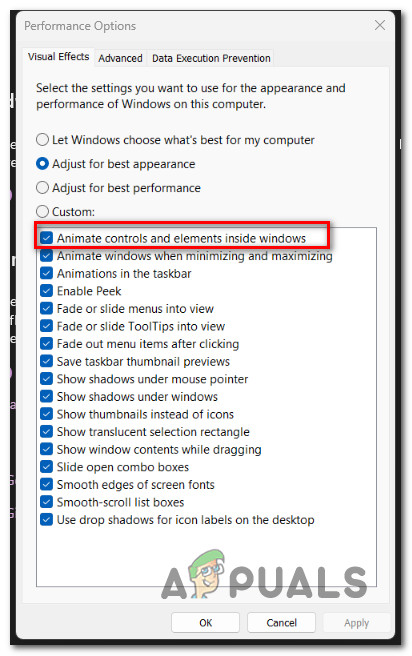After investigating this issue thoroughly and looking at various user reports, we realized that there are several different underlying causes that might be at the root of this problem. Here’s a shortlist of potential scenarios that might be responsible for this weird behaviour with Microsoft Edge: Now that we have gone over every potential reason why you might be experiencing this type of issue let’s go over a series of verified fixes that other Windows 10 and Windows 11 users finding themselves in the same situation have used to get rid of the flickering screen issue inside Microsoft Edge.
1. Install pending hotfix
If you only started to experience this problem after installing optional update KB5012643, you’ll be pleased to know that Microsoft already released a hotfix aimed explicitly at stopping this flickering screen issue. As it turns out, this hotfix was deployed using the newer KIR (Known Issue Rollback) method, but you still might need to install every pending Windows update to ensure that you eliminate the issue entirely. Most impacted users that we’re constantly encountering a brief moment of screen flickering when opening Microsoft Edge has confirmed that the issue went away entirely after they installed every pending Windows update via Windows Update. Note: This fix is confirmed to be effective on both Windows 10 and Windows 11. Here’s what you need to do: If the flickering screen issue is still occurring undisturbed when you open Microsoft Edge, move down to the next method below.
2. Reset Microsoft Edge
If this problem is still occurring despite you making sure that the hotfix is installed, you should also troubleshoot for a specific corruption issue that can cause this type of screen flickering issue immediately after you open the browser. Some users got lucky with this problem and fixed it by opening an elevated Powershell window and using a couple of commands to reset and reinstall the entire native browser component effectively. Note: The instructions below will work on both Windows 10 and Windows 11. Follow the steps below to effectively reset and reinstall Microsoft Edge to eliminate every case of potential corruption. Here’s what you need to do: If the same issue is still happening, try the following method below.
3. Install missing Intel drivers via SSU (if applicable)
If you are experiencing this issue while running on Intel hardware, you first should ensure that you are running on the latest available drivers. As it turns out, Intel recently released a massive infrastructure update across their driver fleet to tackle these flickering screen issues on Windows 10 and 11. If you are experiencing this issue with every browser (not just Microsoft Edge) and you are running on Intel hardware, your best chance at fixing this issue is to download and use the Intel SSU (System Support Utility) to update all your Intel’s driver fleet to the latest version available. For specific instructions on how to do this, follow the steps below: If the flickering screen issue still occurs inside Microsoft Edge even after you update your Intel driver’s fleet, move down to the following method below.
4. Clear Microsoft Edge Temporary Data
According to other affected users, this problem can also occur when some kind of cached Edge-specific data is causing this type of screen flickering. Several users also dealing with this problem have reported that the screen flickering was completely eradicated after all the currently stored temp data associated with Edge was removed. Note: This method is typically reported to be effective when you only experience this problem with certain web pages. Here’s how to clear the Microsoft Edge Temporary data to prevent screen flickering: If the same screen flickering issue still occurs, move down to the following method below.
5. Use a newly created Windows account
Your Windows profile may have been corrupt, which would explain this issue. After switching to a local Microsoft account, users who only saw screen flickering using Microsoft Edge on Windows 11 have reported that the issue has been fixed. It should be warned that this method will eventually delete any infected dependencies associated with your active user profile. After creating a local user account for your Windows installation, sign in as soon as you launch a native Windows application by doing the actions listed below: Move on to the technique listed below if the same problem remains.
6. Update GPU drivers
Additionally, you may have this issue if you were running a deprecated or out-of-date GPU driver. When users upgraded their GPU drivers to the most recent version, several users who had experienced Edge-specific screen flickering reported that the problem was resolved. The simplest method to accomplish it is first to uninstall every Nvidia component, then use Display Driver Uninstaller + CCleaner (or a similar application) to eliminate any dependencies, followed by a clean installation of the most recent suitable GPU driver version. Here are the steps to take if you need step-by-step directions on how to achieve this: If the same problem is still occurring, move down to the following method below.
7. Disable Hardware acceleration
As it turns out, application-specific screen flickering can also be caused by your GPU being forced to do hardware-accelerated GPU scheduling. This will speed up rendering in most cases and make your PC seem more snappy, but the unintended consequence is that you might experience screen tearing and screen flickering with specific applications (particularly UWP applications). If you are experiencing screen flickering only with Universal Windows Platforms apps and hardware-accelerated GPU scheduling is enabled, follow the instructions below to temporarily disable the Hardware-accelerated GPU scheduling from the Settings app and see if the problem is fixed. Follow the instructions below for specific instructions on how to do this: Note: These steps will work on Windows 10 and Windows 11 with minor GUI differences. If the problem is still not fixed, move down to the following method below.
8. Disable Smooth Scrolling in Edge
As it turns out, smooth scrolling is a feature that can be very well responsible for this type of issue, especially if you have it enabled at a system level. On Windows 10 and on Windows 11, you will find this feature camouflaged as ‘Animate controls and element inside windows’ inside the Performance Options menu. If you have this feature enabled and you are experiencing system-wide screen flickering, follow the instructions below for specific instructions on disabling animated controls (AKA smooth scrolling) for all supported applications:
